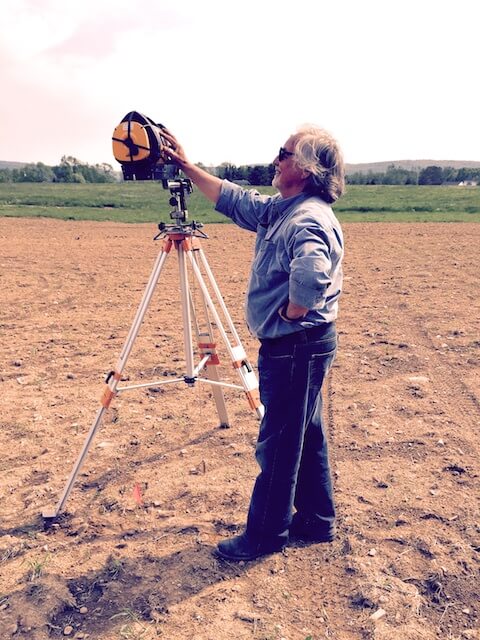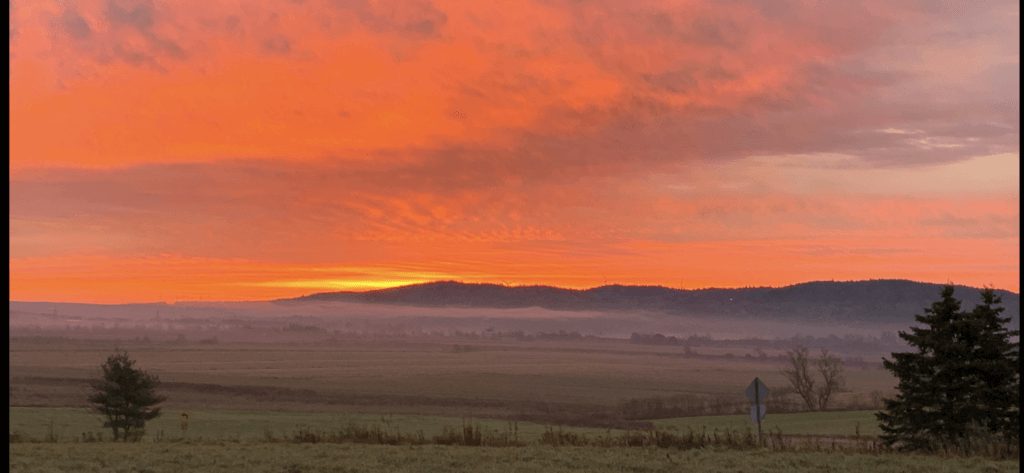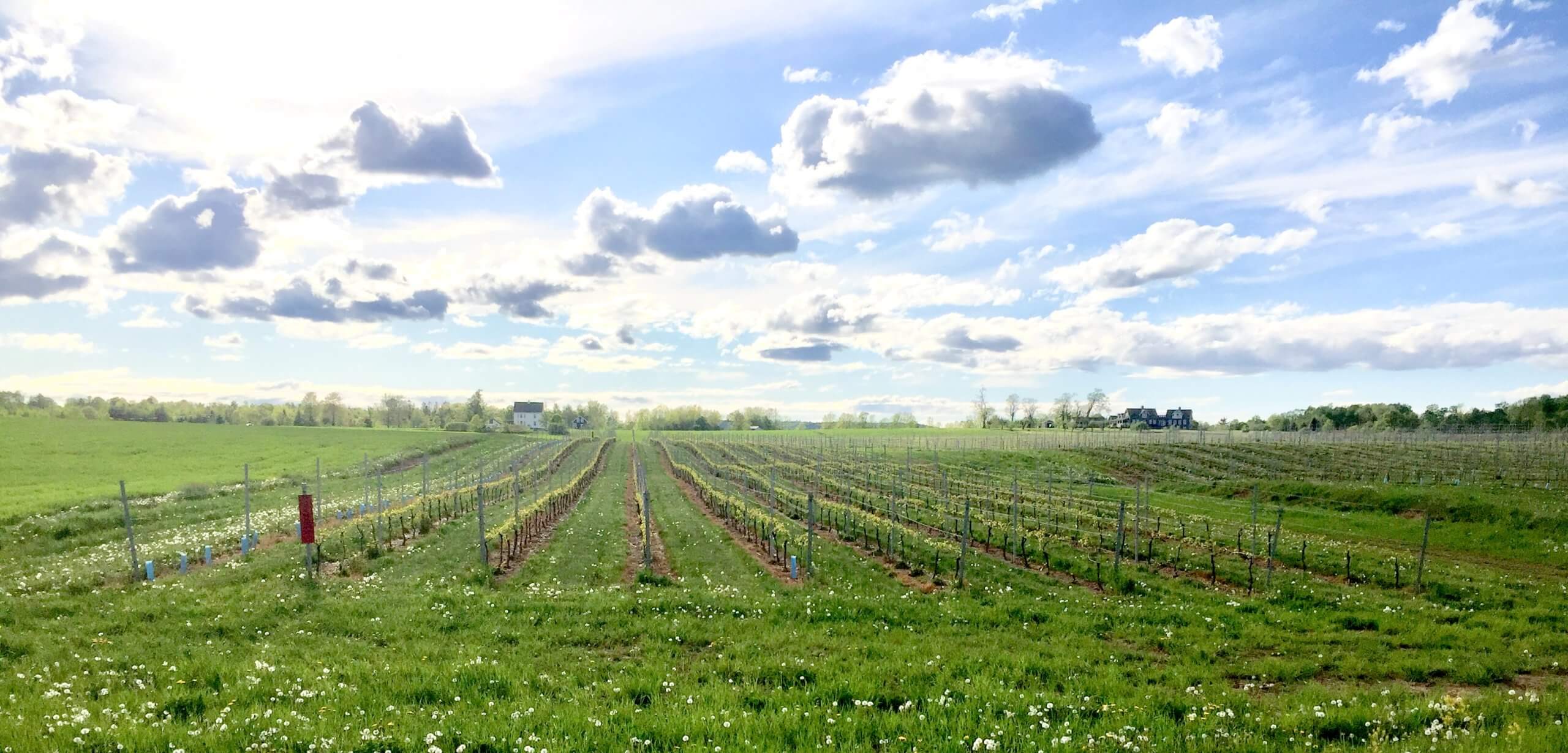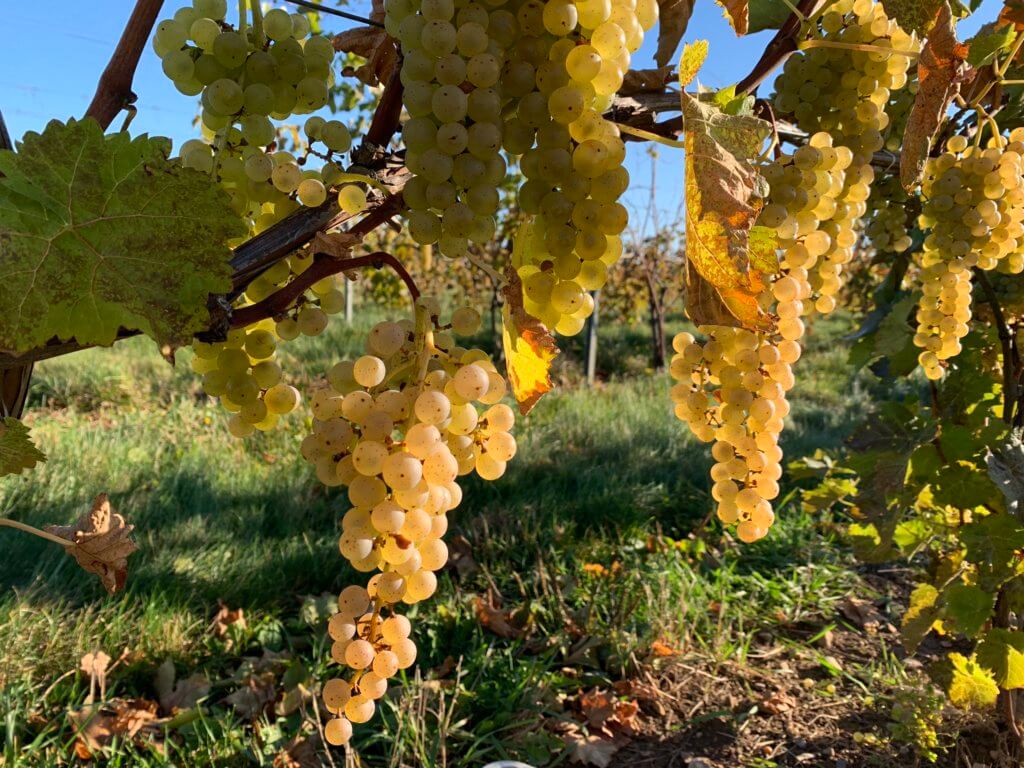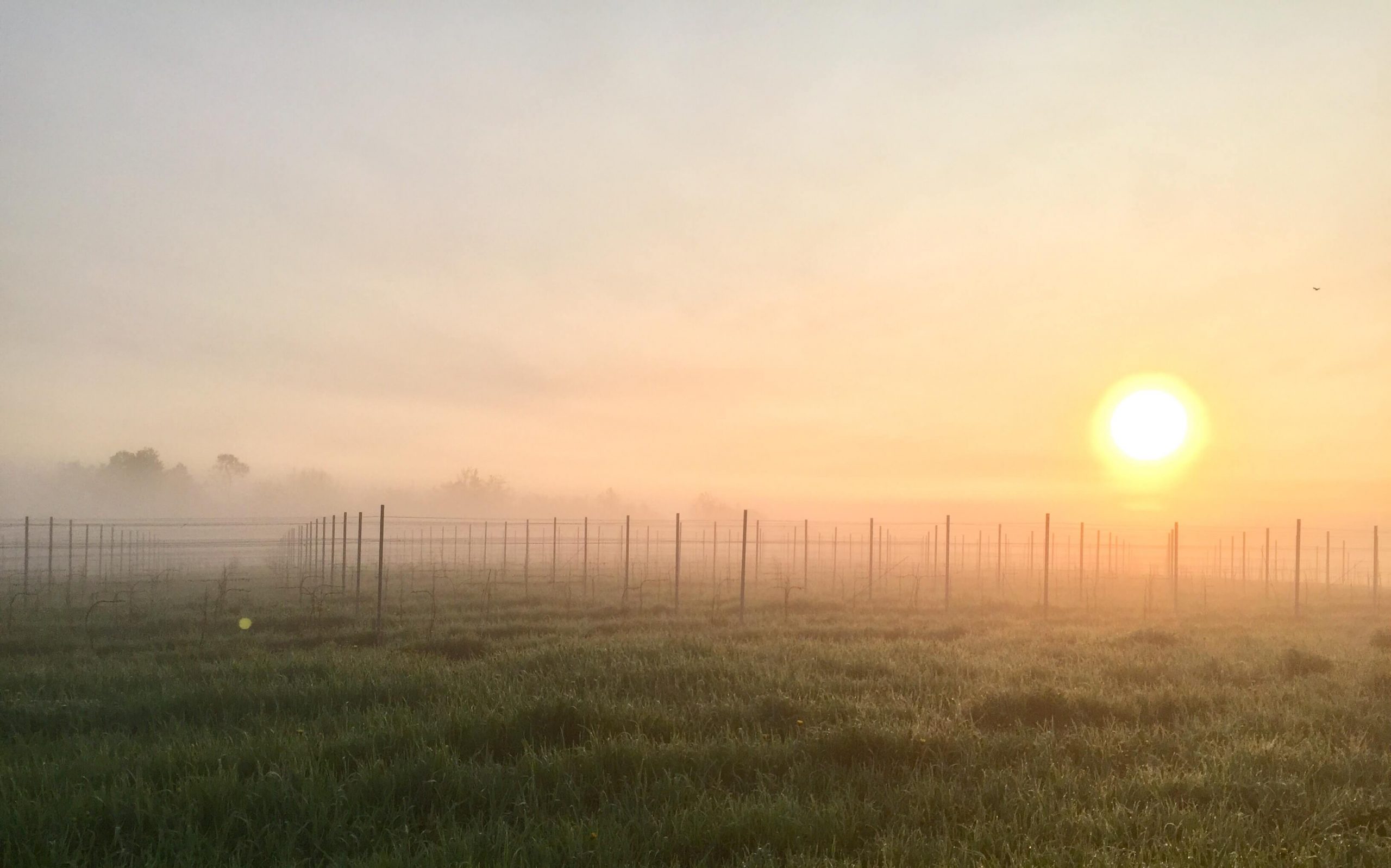Klaus Sudbrack and his crew of Europeans from Shemogue Custom and Trellis arrived in early June and planted all 14 acres in 4 days with their mechanical planter. They kept the rows perfectly straight with laser guidance. Everything went smoothly and the weather was perfect. Blue grow tubes were put on all 14000 vines by Ian Kaye and his crew from NS Vineyard Consulting and Services. The aisles were harrowed repeatedly to smooth after they were ripped to loosen the soil. A loose soil enhances flow of nutrients and lime to the roots of the vines, but the ripping raised a lot of rocks to the surface. Harrowing contributes to soil nutrition by rolling the weeds under to decompose. A level aisle is necessary to prevent tipping of equipment like the hedger, which will shear off a line post or two. The grow tubes allowed the herbicide Ignite to be sprayed without touching the vines. Weeds in the rows need to be controlled early. In our case the weeds got ahead of us and were as high as the vines in some cases. The Ignite, a contact herbicide could only kill the bottom part of the tall weeds. The blue grow tubes were removed at the end of August so that the vine trunks could harden off. The tubes forced the vines to grow straight up with few side shoots and produce a better looking plant.
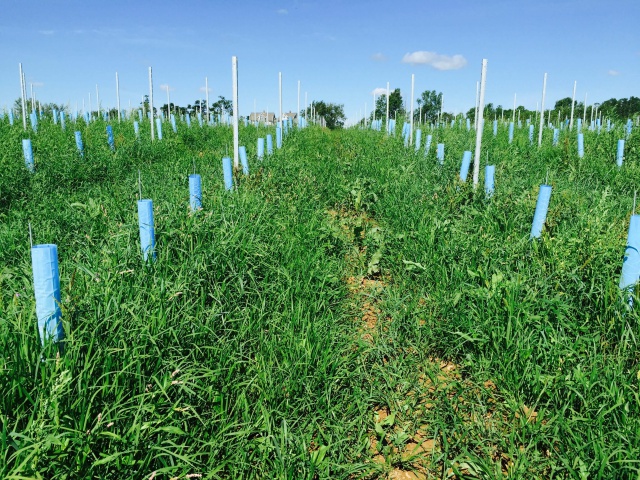
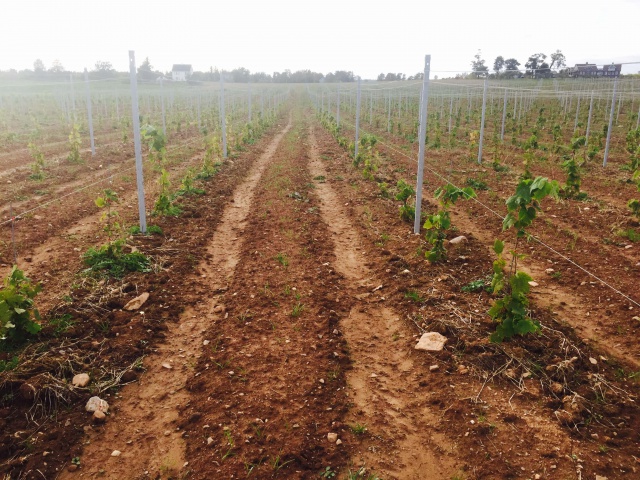
Two thirds of the half-acre that was planted in potted vines either died or are doing poorly. The cause of this was likely the result of mechanical planting. The root ball was probably torn apart during planting and the plant died within days. The vines looked good on arrival from the nursery. The potted plants that did well are the same height as the 2-year-old bare root vines. I think if potted vines are planted carefully by hand and fertilized and watered immediately they will do well. They were placed in grow tubes upon planting which protected them from harsh field conditions including wind, heat and rain.
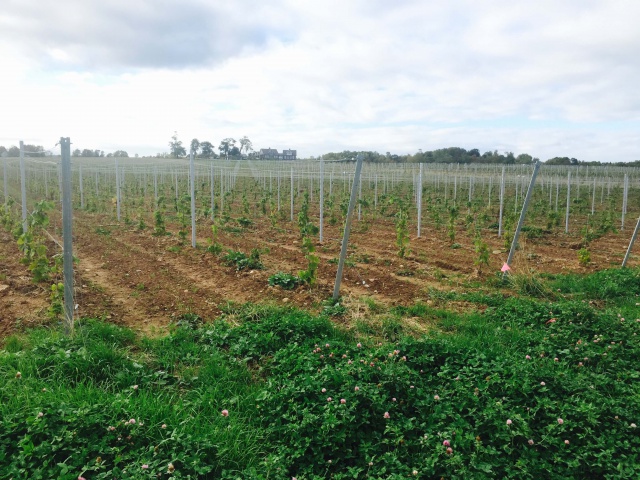
The trellis went up slowly but surely throughout the months of July and August. This work was done by Bob’s Fencing (New Minas). The height of the fruiting wire was placed at 34 inches and a special system was rigged for the NY Muscat, which tends to fruit best at the ends of the cordons. After the grow tubes were removed the rods were tied to the fruiting wire and the vines were taped on to the rods to keep them upright. A fungicide mixed with Potassium and Zinc was sprayed on the vines to control disease and to enhance hardening off of the trunks. A grape hoe was used to control weeds in the rows and to loosen the soil. The metal rods holding each vine up diverted the hoe from the new (and tender) vine. Rye was planted in the aisles, which will hold the soil over the winter. Clover and peas will be planted in the spring to enhance soil nitrogen, which will be ploughed under later in the summer. The vinifera and Cabernet Foch were hilled up in late November.
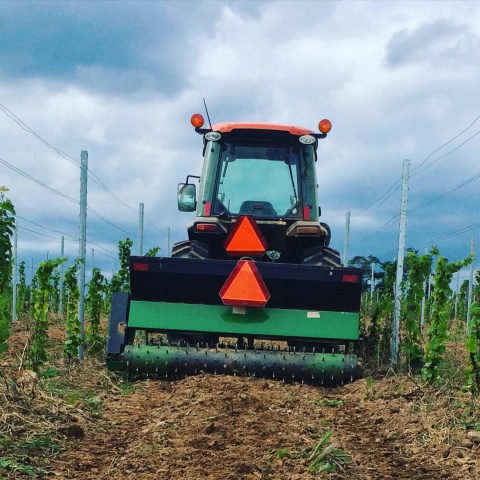
A mixture of TSP and SOP (triple superphosphate/sulfate of potash) as recommended by Lise from LP Consulting was spread in the planted 14 acres in mid December (Soil nutrition blog). The mix was prepared by Scotia Gold and delivered in 25 kg bags. Chicken manure was recommended by Lise to supplement phosphorus and potassium on the unplanted mid and lower sections that will be planted in 2016 and 2017 respectively. Chicken manure has loads of phosphorus and potassium, but because there is also a lot of nitrogen it is not recommended for already planted vines. Unfortunately, frequent rain and then a foot of snow prevented the shipment of manure from Andre Merks chicken farm in Avonport so this will have to wait until spring.
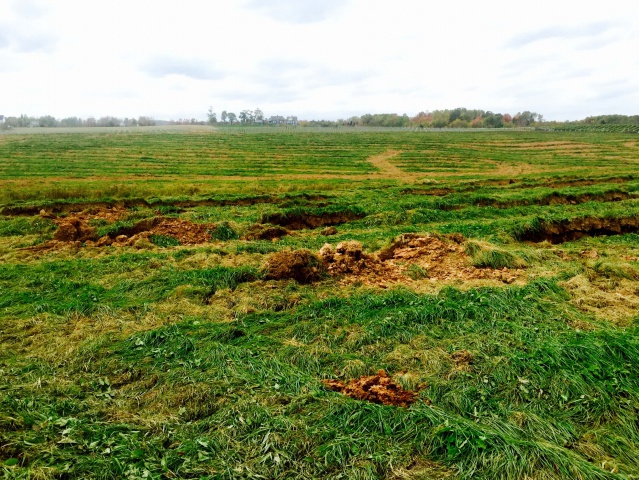
Another planting is planned for next spring and will include a 9 acres plot in the middle of the field. This field has been drain tiled and ploughed. Riesling, Cabernet Foch, Seyval Blanc and Petite Milo are being planted for Luckett Vineyards. It has received one treatment with lime and another is planned for next spring. Lime was trucked by Jeff O’Leary of Riverside Custom Trucking (902-790-0508) from Mosher Lime Quarry in Upper Musquodoboit (902-568-2654). Other vineyards (Grand Pre and Luckett) have not had success with Cab Foch. Crown gall was severe and found predominantly in the lower trunk. It is thought that by treating the vines more like vinifera, the factors that predispose to crown gall (cold, poor drainage, less than optimal soil conditions, disease) may be alleviated. Low head pruning that shortens the trunk along with hilling up may help.
An application has been submitted to the NS Department of Agriculture for funding from the Vineyard Development and Extension Program 2015-16. This program may be extended for a couple more years. The deadline was November 31, 2015, but was extended to December 18. It requires that the vineyard have a written agreement with a winery to grow mutually agreed upon grapes for a period of 10-15 years. At first glance this appears to be a rather onerous requirement for the vineyard, but it may protect prices from over production. Also it allows the winery time to get to know the characteristics of the vineyard and to provide advice on growing grapes to suit their wine needs.
Equipment acquired this year included a secondhand 2008 Collard deleafer, a 2012 Collard hedger and a 2009 Gregorie 2000 L sprayer. These all required attachments to be welded on the tractor and/or the equipment to allow them to be used. A consideration for new vineyard owners to enhance compatibility would be to buy the equipment and tractor from the same company. This would be very expensive, as it would all need to be purchased new. Equipment needs for 2016 include a grape hoe and a herbicide sprayer. Options besides continuing to borrow this gear are to buy them secondhand if available from Lakeview Vineyard Equipment Inc in Niagara-on-the-Lake, Ontario or new from an European representative like Klaus Sudlack of Shemogue Custom and Trellis in New Brunswick.
